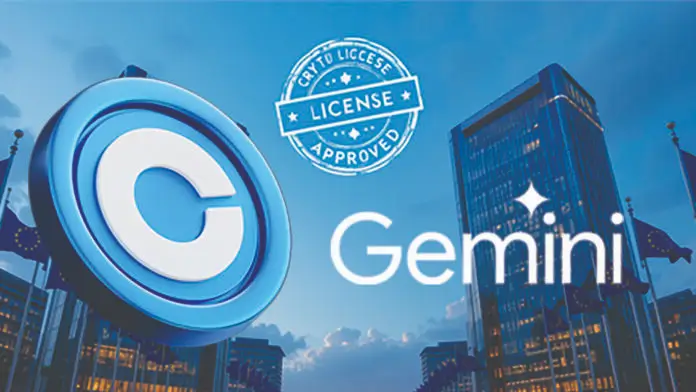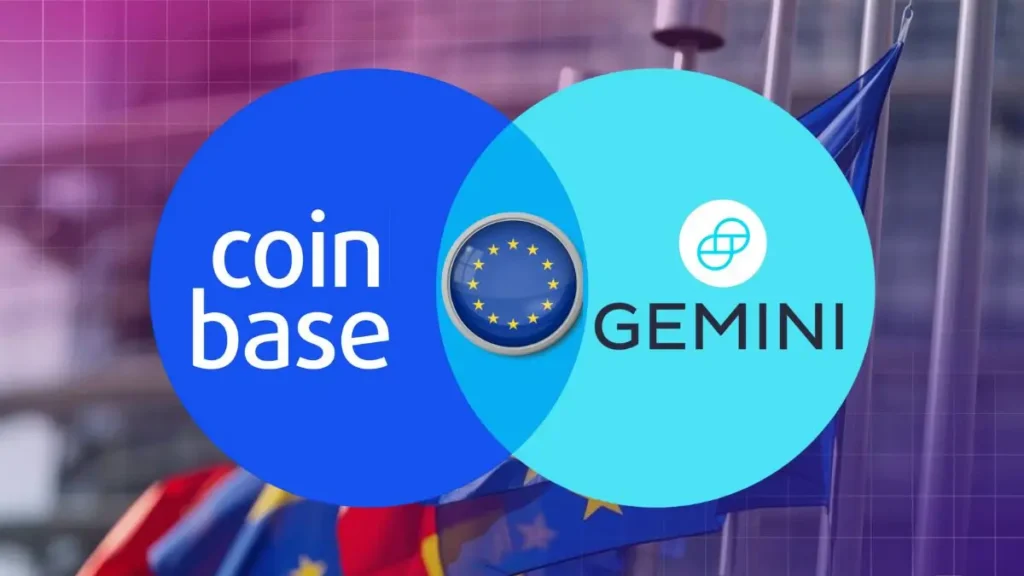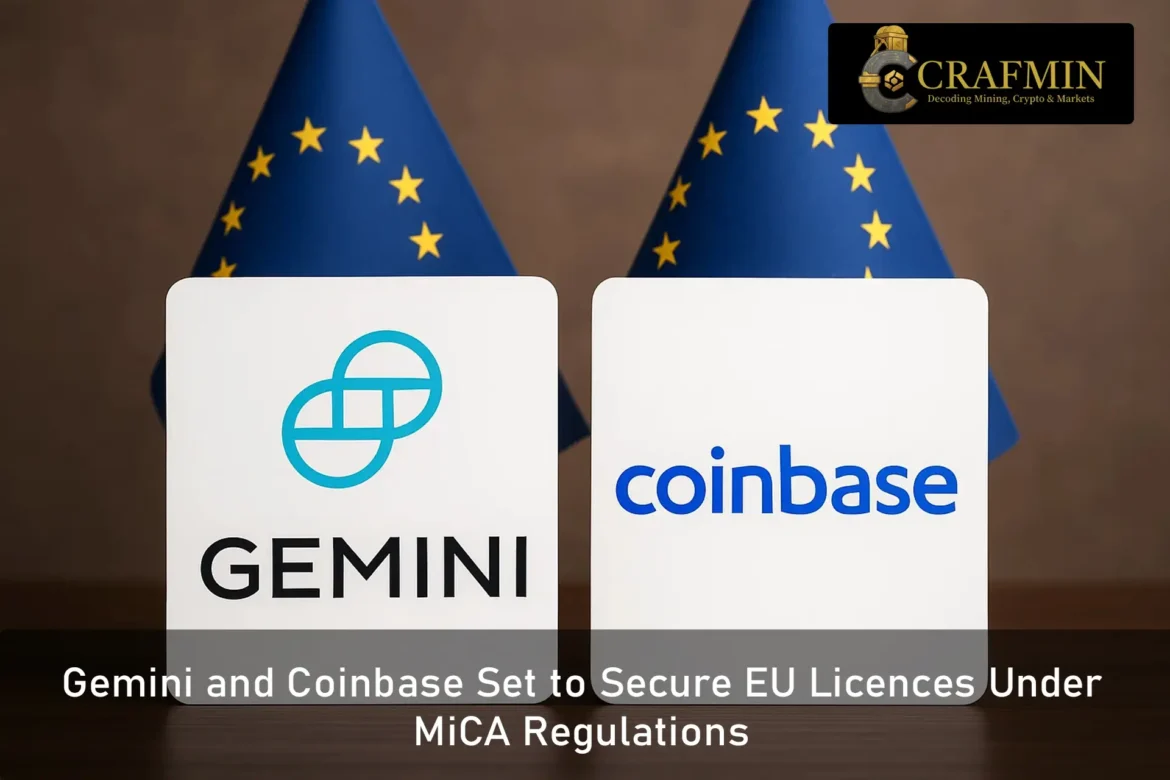The race to establish a firm footing in Europe’s crypto market is heating up as Gemini and Coinbase, two of the industry’s heavy hitters, are expected to lock in licences to operate across the European Union. This move comes as part of the rollout of the EU’s Markets in Crypto-Assets (MiCA) regulation, which is designed to streamline and unify crypto rules across the bloc.
Gemini is on track to receive its licence through Malta, a country well known for its crypto-friendly environment. At the same time, Coinbase is preparing to secure approval via Luxembourg, a jurisdiction respected for its robust financial services sector. These approvals will enable the exchanges to offer their services EU-wide under a consistent regulatory framework.

Image 1: (Source: The Market Periodical)
Driving Consistency in European Crypto Markets
MiCA was introduced to replace the patchwork of national regulations with a single set of rules, making life easier for crypto operators wanting to scale across Europe. In the days before MiCA came into play, crypto firms often found themselves wading through a maze of differing national rules, making cross-border operations a real uphill battle.
According to insiders familiar with the applications, Gemini and Coinbase are nearing the finish line in obtaining their EU licences. While Coinbase has not publicly commented on the specific status of its application, it has acknowledged Luxembourg’s standing as a major global financial hub. This strategic choice reflects the growing importance of having a European base in a well-regulated environment.
Other major exchanges have already taken the plunge under MiCA’s banner. Bybit has already secured the green light to kick off operations in Austria, while Binance has rejigged its transaction procedures in Poland to stay in line with MiCA’s rulebook. The new rules came into force in June 2024, with full enforcement expected by the end of the year, following final guidance issued by the European Securities and Markets Authority (ESMA).
This coordinated approach is a game-changer, offering clarity and certainty that has been sorely missing in the fast-moving crypto landscape. It allows firms to navigate the market without the fear of running afoul of inconsistent national laws.
Navigating Stablecoin Rules Within MiCA
Stablecoins, which are cryptocurrencies pegged to traditional currencies to maintain value stability, feature prominently in MiCA’s regulatory landscape. One key requirement demands that issuers hold a significant portion of their reserves in European banks. This provision has been a sticking point for some players.
For instance, Tether, which issues the popular USDT stablecoin, has chosen not to pursue registration under MiCA, likely due to the reserve rules. Meanwhile, at least ten other stablecoin issuers, including Circle and Crypto.com, have successfully complied with the new framework and secured approval.
Italy, being one of the EU’s heavyweight markets, hasn’t exactly jumped on the stablecoin bandwagon since MiCA rolled out. Fabio Panetta, Governor of the Bank of Italy and former European Central Bank official, has noted that the market’s attention has shifted more towards custodial services—where firms hold crypto assets on behalf of customers—and trading platforms, rather than stablecoins themselves.
A New Era for Crypto Compliance in Europe
The movement of Gemini and Coinbase towards MiCA-compliant licences signals a significant step forward for the European crypto market. By aligning with MiCA’s comprehensive regulatory standards, these exchanges are positioning themselves to operate legally and transparently across the EU’s diverse market.
The introduction of MiCA has pulled the rug out from under the fragmented approach that characterised European crypto regulation. Instead, it has laid down a clear path that balances innovation with investor protection. This change is a shot in the arm for crypto’s steady rise and evolution across Europe.

Image 2: (Source: Crypto Economy)
With the likes of Gemini, Coinbase, Bybit, and Binance adapting their operations to fit within this new regulatory mould, the landscape is evolving rapidly. This alignment also sends a strong signal to investors and users that the market is moving towards greater legitimacy and stability.
While there remain areas to watch, especially concerning stablecoins and their regulatory treatment, the overall trajectory points towards a more structured and secure crypto ecosystem in Europe. For the exchanges involved, securing MiCA licences is not just about compliance—it’s about planting a flag and staking a claim in a region that is keen to foster responsible crypto innovation.
Read Also: Bybit Secures MiCA Licence in Austria, Launches EU Headquarters in Vienna
All things considered, Gemini and Coinbase are geared up to make a strong start in the EU, catching the tailwind of MiCA’s sweeping regulatory revamp. Their progress reflects a broader trend of crypto players adapting to the changing tides of financial regulation and striving to build trust with users and regulators alike.

